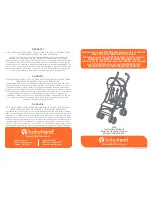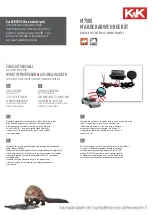
Figure 7-8. Typical Transistor Wiring.
Table 7-3. Transistor Resistance Readings.
(+)
Base
Base
Emitter
Collector
Collector
Emitter
(–)
Emitter
Collector
Base
Base
Emitter
Collector
Transistor
Low Resistance
Low Resistance
Low Resistance
Open
Open
Low Resistance
Transistor Defective
Open
Open
Open
Low Resistance
Low Resistance
Open
7:11
6.
Set a volt-ohmmeter on the x1
ohmmeter scale and measure
the resistance by referring to
the labels B, E and C on the
transistor block.
Volt-ohmmeter current must
be less than 150 mA. See
Figures 7-7 and 7-8 and refer
to Table 7-3.
7.
If any transistor is defective,
replace the transistor.
DANGER
THE FOLLOWING CHECKS
ARE MADE WITH INPUT
VOLTAGE APPLIED TO THE
CONTROLLER. EXERCISE
EXTREME CARE BECAUSE
HAZARDOUS VOLTAGE EX-
ISTS. FAILURE TO OBSERVE
THIS PRECAUTION COULD
RESULT IN SEVERE BODILY
INJURY OR LOSS OF LIFE.
8.
Turn input power ON. With a
voltmeter set on the 500 VDC
scale, measure the voltage ar
regulator board terminal
145(–) and faceplate terminal
147(+). The voltage should be
greater than 290 VDC.
9.
Turn off the base drive circuit
by turning 1SW-7 switch ON.
The red LED labeled “BBK”
should illuminate.
10. Measure the voltage between
the base-emitter (terminals B
and E with the yellow and
orange twisted cables on the
transistor block) at each
transistor. There are two
transistors per block. If the
voltage does not read more
than –1 volt, replace the
transistor.
Artisan Technology Group - Quality Instrumentation ... Guaranteed | (888) 88-SOURCE | www.artisantg.com











































